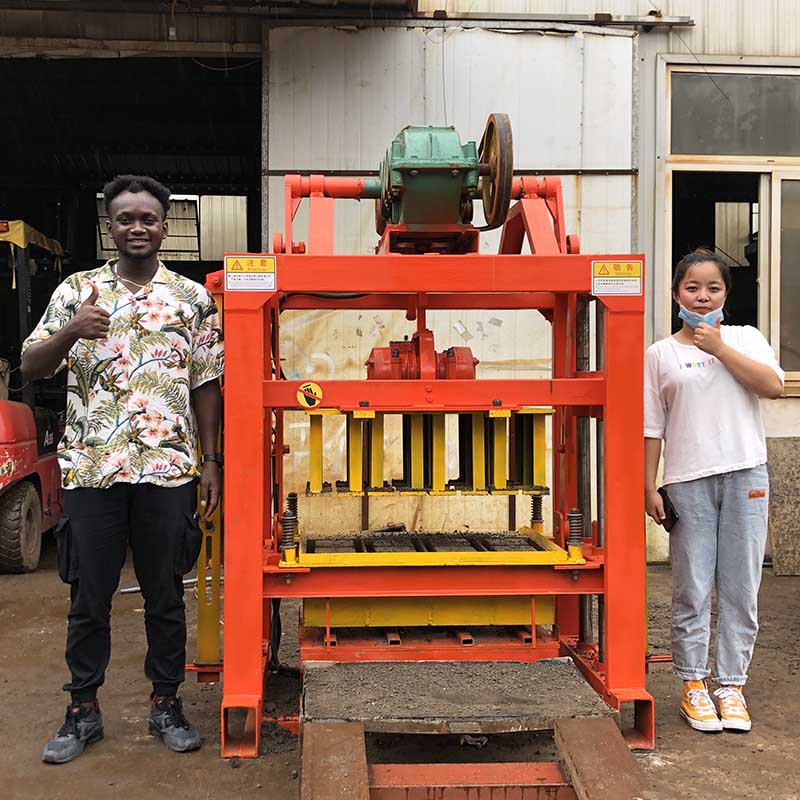
Image source:Aiwei block machine
Introduction
The construction industry has been a driving force behind economic development and infrastructure growth globally. At the heart of every construction project lies the need for bricks and blocks, making brick production a cornerstone of this industry. Cement brick machines have revolutionized brick manufacturing, significantly impacting the pricing dynamics of these essential building materials. In this article, we will delve into the trends in cement brick machine pricing, examining the past, the current landscape, and what the future holds.
Understanding Cement Brick Machines
Before we explore the pricing trends, let’s gain a deeper understanding of what cement brick machines are and their role in brick production.
Cement brick machines are industrial equipment designed to automate the process of manufacturing bricks and blocks using cement as the primary binding material. These machines come in various configurations, ranging from manual and semi-automatic to fully automatic systems. They are essential tools for enhancing brick production efficiency, quality, and output.
Past Pricing Trends
To comprehend the present and future pricing trends, it’s essential to reflect on the past. Historically, cement brick machines were relatively expensive and mainly used in large-scale industrial brick manufacturing. The high cost of these machines limited their accessibility to small and medium-sized brick producers.
However, advancements in technology and manufacturing processes have led to a gradual reduction in the cost of cement brick machines over the years. This reduction in manufacturing costs has been a crucial factor in making these machines more affordable and accessible to a broader range of brick producers.
Current Pricing Landscape
In recent years, the pricing landscape of cement brick machines has undergone significant changes. Several key factors influence the current pricing of these machines:
1. Technological Advancements
Modern cement brick machines incorporate advanced technologies that improve efficiency and reduce operating costs. While these machines may have a higher upfront cost, their long-term benefits and lower production costs make them attractive investments.
2. Market Competition
The increasing demand for cement brick machines has led to heightened competition among manufacturers. This competition has driven prices down as manufacturers strive to offer cost-effective solutions to attract buyers.
3. Range of Machine Types
The pricing of cement brick machines varies widely based on their capacity, level of automation, and features. Manual and semi-automatic machines are generally more affordable, while fully automatic machines command higher prices due to their advanced capabilities.
4. Raw Material Costs
The cost of cement, the primary raw material used in brick production, can fluctuate based on market conditions. This can influence the overall pricing of bricks and, consequently, cement brick machines.
5. Regional Variations
Prices for cement brick machines can vary significantly by region due to differences in manufacturing costs, market demand, and local economic conditions.
Future Pricing Trends
Looking ahead, several trends are likely to shape the pricing of cement brick machines in the future:
1. Continued Technological Innovation
As technology continues to advance, cement brick machines are likely to become more efficient, reliable, and cost-effective. This may lead to a broader range of options at varying price points.
2. Sustainability Considerations
The construction industry is increasingly focused on sustainability and eco-friendly practices. Future cement brick machines may incorporate features that reduce energy consumption and use more environmentally friendly materials, potentially impacting pricing.
3. Market Expansion
As construction projects continue to grow globally, the demand for bricks and blocks will increase. This expansion may drive both competition and innovation, potentially influencing pricing trends.
4. Economic Factors
Economic conditions in various regions can affect the pricing of cement brick machines. Factors like inflation, currency exchange rates, and economic stability will play a role in determining machine costs.
5. Government Policies
Government policies and regulations related to manufacturing, environmental standards, and industry support can also influence pricing trends.
Conclusion
The pricing of cement brick machines has evolved significantly over the years, becoming more affordable and accessible to a broader range of brick producers. Current pricing trends are shaped by technological advancements, market competition, and regional variations. Looking forward, the future of cement brick machine pricing will likely be influenced by ongoing technological innovation, sustainability considerations, market expansion, economic factors, and government policies.
As construction projects continue to drive demand for bricks and blocks worldwide, the cement brick machine industry will play a pivotal role in meeting these needs. To stay competitive and make informed investment decisions, brick producers and construction professionals should remain vigilant in monitoring pricing trends and adapting to changing market dynamics.
